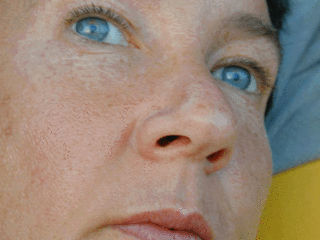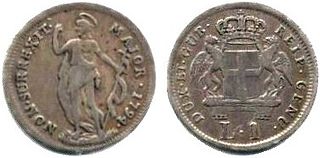Laura Cretara (Rome, December 28, 1939) is an Italian medallist and engraver.
Laura Cretara (Rome, December 28, 1939) is an Italian medallist and engraver.
Following her father's footsteps (Francesco was a painter and engraver, member of the Communist Party of Italy), she had her first artistic training at home. [1] She completed her education attending the Artistic High School, then the Academy of Beautiful Arts of Rome. Later, she attended the "Scuola dell'Arte della Medaglia della Zecca di Stato" (School of Art of Medal of the Mint of State) where she had teachers like Guttuso, Fazzini, Giampaoli and Balardi.
In 1961 she was employed as engraver at the Mint of Rome and in 1970 she drew the reverse of the silver coin of 1000 lire struck for the 100th anniversary of Rome as Capital. She's been the first woman in Italy to sign a coin.
She designed the 100 lire coined since 1993, as well as the national face of the one euro coin with the Vitruvian man by Leonardo.
She also designed great part of the Italian bimetallic coins of 500 lire.
Italian euro coins have a design unique to each denomination, though there is a common theme of famous Italian works of art from one of Italy's renowned artists. Each coin is designed by a different designer, from the 1 cent to the 2 euro coin they are: Eugenio Driutti, Luciana De Simoni, Ettore Lorenzo Frapiccini, Claudia Momoni, Maria Angela Cassol, Roberto Mauri, Laura Cretara and Maria Carmela Colaneri. All designs feature the 12 stars of the EU, the year of imprint, the overlapping letters "RI" for Repubblica Italiana and the letter R for Rome. There are no Italian euro coins dated earlier than 2002, even though they were certainly minted earlier, as they were first distributed to the public in December 2001.

Benedetto Pistrucci was an Italian gem-engraver, medallist and coin engraver, probably best known for his Saint George and the Dragon design for the British sovereign coin. Pistrucci was commissioned by the British government to create the large Waterloo Medal, a project which took him thirty years to complete.

The lira was the currency of Italy between 1861 and 2002. It was first introduced by the Napoleonic Kingdom of Italy in 1807 at par with the French franc, and was subsequently rolled out by the different states that would eventually form the Kingdom of Italy in 1861. It was subdivided into 100 centesimi, which means "hundredths" or "cents". The lira was also the currency of the Albanian Kingdom from 1941-1943.
The Papal Mint is the pope's institute for the production of hard cash. Papal Mint also refers to the buildings in Avignon, Rome, and elsewhere that used to house the mint..

The Italian Istituto Poligrafico e Zecca dello Stato (IPZS), founded in 1928, is situated at the via Salaria 691 in Rome. As well as producing coins, passports, and postage stamps for Italy, it serves the micro-states of the Vatican City, San Marino, and the Sovereign Military Order of Malta. It also publishes books under the imprint Libreria dello Stato. The O.C.V and traditional productions factory, the multimedial production institute and the Mint are also located in the capital. Another factories are located in Verrès, Val d'Aosta and Foggia, Apulia. Banknotes are produced by Bank of Italy.

Giuseppe Pellizza da Volpedo was an Italian divisionist painter. He was born and died in Volpedo, in the Piedmont region of northern Italy.

Jane McAdam Freud MA(RCA) FRBS is a British conceptual sculptor working in Installation art and digital media. She was the winner of the 2014 European Trebbia Awards for artistic achievement.
Margherita Guarducci was an Italian archaeologist, classical scholar, and epigrapher. She was a major figure in several crucial moments of the 20th century academic community. A student of Federico Halbherr, she edited his works after his death. She was the first woman to lead archaeological excavations at the Vatican, succeeding Ludwig Kaas, and completed the excavations on Saint Peter's tomb, identifying finds as relics of Saint Peter. She has also engaged in discussions on the authenticity of the Praeneste fibula, arguing that its inscription is a forgery.

Giuseppe Tominz, also known as Jožef Tominc, was an Italian-Slovene painter from the Austrian Littoral. He worked mostly in the cultural milieu of the upper bourgeoisie in the Austrian Illyrian Kingdom. He was one of the most prominent portraitists of the Biedermeier period. He became renowned for his realistic portraits. He worked mostly in the Austrian Littoral, but also produced religious paintings in Carniola and in Croatia. His handiwork can be seen in the Holy Mary Church in Stoliv. Nowadays, many of his works are on display in the Revoltella Museum in Trieste, some in the National Gallery of Slovenia in Ljubljana, National Museum of Serbia and in the Museum of History and Art of Gorizia. He is considered part of both the Italian and the Slovenian national culture canon.
Italy has a long history of different coinage types, which spans thousands of years. Italy has been influential at a coinage point of view: the florin, one of the most used coinage types in European history, was struck in Florence in the 13th century. Since Italy has been for centuries divided into many city-states, they all had different coinage systems, but when the country became unified in 1861, the Italian lira came into place, and was used until 2002. Today, Italy uses the Euro.

The Fourth Estate is an oil painting by Giuseppe Pellizza da Volpedo, originally titled The Path of Workers and made between 1898 and 1901. It depicts a moment during a labor strike when workers' representatives calmly and confidently stride out of a crowd to negotiate for the workers' rights. Its name refers to the working class as standing alongside the three traditional estates that divided power between the nobility, clergy, and commoners.

The Galleria Estense is an art gallery in the heart of Modena, centred around the collection of the d’Este family: rulers of Modena, Ferrara and Reggio from 1289 to 1796. Located on the top floor of the Palazzo dei Musei, on the St. Augustine square, the museum showcases a vast array of works ranging from fresco and oil painting to marble, polychrome and terracotta sculpture; musical instruments; numismatics; curios and decorative antiques.
Clelia Giacobini was an Italian microbiologist, and also a pioneer of microbiology applied to conservation-restoration.

The Zecca is a sixteenth-century building in Venice, Italy which once housed the mint of the Republic of Venice. Built between 1536 and 1548, the heavily rusticated stone structure, originally with only two floors, was designed by Jacopo Sansovino in place of an earlier mint specifically to ensure safety from fire and to provide adequate security for the silver and gold deposits. Giorgio Vasari considered it the finest, richest, and strongest of Sansovino's buildings.

Raissa Samojlovna Calza was a Ukrainian dancer who became a prominent classical archaeologist of Roman portraiture. When she was young, she fled to Italy and France following the Russian revolution. After studying archaeology at the École du Louvre, she returned to Italy and began working at the Ostia Antica excavation site, where she met her third husband Guido Calza. She published many books on the archaeological sites in Ostia and was recognized for her efforts with a gold Italian Medal of Merit for Culture and Art on 2 June 1967. She died in 1979 and was buried at the Church of Sant'Ercolano near Ostia Antica.
Guerrino Mattia Monassi was an Italian medalist and engraver. He was a pupil of Pietro Giampaoli who called him to Rome in 1934 in the workshop of Torre dei Capocci. In 1963 he was appointed chief engraver at the Istituto Poligrafico e Zecca dello Stato.

The Genoese lira was the currency of the Republic of Genoa until 1797.

The Mirandola mint, also known as the mint of the Pico della Mirandola, was the mint of the Duchy of Mirandola.
The Camerlenghi di Comun were senior fiscal officials of the Republic of Venice.
Laura Cretara: l'arte di fare monete (in Italian). OS.l.!: Museo delle arti, Castello di Nocciano. 2003. OCLC 955539162.